Watercolor Painting Ideas Biography
source(google.com.pk)Being a beginner means you need to start somewhere and that's fine; just take it slowly and enjoy your new painting skills! Water color painting is both enjoyable and a bit frustrating at times. It all depends on how you approach it. It is one of the most versatile mediums to work in. You can paint from very controlled and detailed, to very loose and impressionistic. It is recommended that you don't begin with the idea of creating a masterpiece your first time! Take small steps and learn in stages.
You will have to do a bunch of painting before you feel completely comfortable with the medium." Do not give up if your first attempts are less than desired. It takes time and repeated effort to get comfortable with painting in watercolors. But it is worth it!
Let's begin with using watercolors!
Steps
LayOutPaper Step 1.jpg
1Lay a sheet of heavy paper out on a table. Draw some very simple design on it with LIGHT pencil marks. A square or circle is a good idea.
Ad
DabOfPaint Step 2.jpg
2Put a small dab of any color of watercolor onto the white palette plate.
WetBrush Step 3.jpg
3Get your brush lightly wet. If there is too much water in the brush, dab it on the towel to soak up the excess, or lightly shake the excess out of the brush.
DropWaterOnPaint Step 4.jpg
4Drop a couple of drops of water - from your paintbrush - onto the dab of watercolor that you have on your palette plate. Don't use too much - just enough to make the watercolor liquid.
PaintSquare Step 5.jpg
5Dip your brush into the watercolor liquid on your palette, and lift a small amount of color onto your brush. Next, paint this inside the shape drawn on your paper. If the paint is too thick, and stays in one place, dip your brush into the water again and add a little more water to the paint on the paper. Keep experimenting with different amounts of water versus paint mixtures to get a feel for just the right amount of water versus paint you desire. If you want a "dry brush" look, you will use less water on your brush versus the amount of paint. If you want a very wet flowing look, you will want more water versus paint, etc... Fill in the shape with color on your paper.
LetDry Step 6.jpg
6Let the picture dry.
TapeCorner Step 7.jpg
7Take a piece of watercolor paper, tape down the edges firmly on a drawing board. Using a big brush or a sponge, get it wet all over. Then try painting into that with different colors. As the paper dries, observe the different ways the paint reacts with how much water there is on the paper.
StripesOfColour Step 8.jpg
8You can get a very smooth background light color by going wet into wet. Colors mingle with each other on the paper easily and some colors migrate more than others. Try laying down stripes of blue, then a stripe of yellow or gold next to it, then a stripe of red after the gold when it's very wet. You'll see the mixtures your colors create as they form a smooth gradation.
ExperimentWithWetness Step 9.jpg
9Try letting it dry until the sheen is gone but the paper is still damp. Now your strokes will still be soft edged but a little more defined. Once the color's down, let it dry completely and then add details wet on dry.
TrySimpleScene Step 10.jpg
10Use a very simple subject at first that has broad areas of color. Mix some sky blue. Mark some hills and a tree in your sketch lines. First paint them in loosely wet in wet. Then start adding some large details wet on damp. Finally add all the smallest details with wet on dry when it's completely dry.
CheckForDryness Step 11.jpg
11You can tell when the paper is completely dry because it will no longer feel cool. Hold the back of your hand over the painting, but do not touch it. It takes a little practice to really feel the dampness this way, but touching your painting could damage it or leave skin oils on it. Don't remove the tape around the edges until it's completely flat and dry. The tape is what's keeping the paper flat or flattening it out again when it bubbles up.
UseWaterColourBlock Step 12.jpg
12You can use a watercolor block that's gummed on all four sides like the top of a writing pad instead of taping your paper down. It's a little more expensive but very convenient for a beginner.
TryUsingSalt Step 13.jpg
13Try using a big wash - lots of light color - in an area. Then shake salt in it before it dries. You'll get some beautiful effects that you can use to make snowflakes in the sky or lichen on rocks.
UseCrayonAsMask Step 14.jpg
14Try drawing on the paper with a white colored pencil, wax crayon or candle end to see the lines show up when you watercolor over them.
TryMaskingShapes Step 15.jpg
15Try cutting out shapes in masking tape and painting inside those shapes to get exact shapes. Anything you mask with masking tape will stay clean and white.
PaintDarksFirst Step 16.jpg
16Always paint watercolor paintings by painting the dark areas first and paint around the light areas. Paint around or mask anything you need to keep white. Getting used to "negative painting" like this will also help you get more accurate outlines to objects than trying to draw the object itself. Try drawing just the shape of the space around the cup exactly and the shape of the space within the handle instead of drawing the cup. You'll see a big difference in accuracy!
TryGlazing Step 17.jpg
17Try "glazing." Once a watercolor mark or area is completely dry, mix a thin wash of another color and paint over it quickly. It will change the color and if you do it carefully, won't disturb the details you painted under it. A light gold glaze on sunlit areas in a landscape can make the sunlight look much richer.
Research Step 18.jpg
18Read books and articles on watercolor and try the ideas in them. Watch videos on YouTube and other places to get ideas for watercolor techniques. Then paint something you really like. A good type of painting that translates well to watercolor is Sumi-E or Japanese ink painting - those strokes and techniques are just as beautiful in watercolor.
Ad
Know another method for How to Approach Watercolor Painting As a Beginner? Add it here...
Add Method
Video
General tips for selecting brushes and how to use them in watercolor painting.
Tips
Many instructors begin with "wet-into-wet" technique, but I prefer to introduce you to the most common technique, and that is "wet-into-dry". This means wet brush-into-dry paper.
If you use good all-rag watercolor paper like Arches, don't throw out any bad paintings you do. You can always paint over it again with acrylics or gouache or use it as a background for a pastel painting. It also will handle better than cheaper papers and if you do create something beautiful, it will last much longer without yellowing.
Watercolors come in either 'pan', pencil, or tube form. There are also watercolor crayons. This article uses watercolor from the TUBE.
Find the type of PAPER that suits YOUR style of painting. Different papers have different "personalities". Arches paper can take a lot of abuse. You can even wash your painting off the paper after you allow the paper to dry and re-use it.
Don't throw away empty half pans when you use up the paint. You can refill them from tube watercolors much cheaper than buying new half pans and if you rinse it completely, you can change color on it too once you find out what colors you like most.
Don't purchase the MOST expensive paper or pure sable brushes, etc... You can spend a large amount of money on supplies, but this isn't necessary! Good synthetic brushes, a small palette of good paint (artist grade paint actually works better than student grade) and 140lb cold press watercolor paper are the best things to get started. Begin small, and add supplies as you need them.
Watercolor pan sets are convenient for painting outdoors or on trips. They're not as easy to mix large amounts of color with, but very useful for doing wet onto dry especially. A good travel brush with a sharp point on a round in medium or large size helps with these sets, sometimes the brush that comes with them is way too small for anything but details. This and a postcard size watercolor block can go in your pocket to practice painting on your lunch hour at work or school. Some of the ones Winsor & Newton makes are fancier than others and include extras like their own water bottle, extra palette flaps that fold out and so on.
One of the best makers of watercolor paints is Winsor & Newton. The "Cotman" brand is for use by beginners. It is less expensive and thus you don't feel as guilty using it in large quantities. Winsor & Newton "Cotman" watercolors are excellent quality for student watercolor paints.
Wet into Wet techniques are also good and usually used before wet into dry techniques if you combine them in the same painting.
Ad
Warnings
NEVER leave your brush sitting in the jar of water with its bristles face down. If you get a brush cleaner jar that has a coiled spring over it, though, you can hang it hairs down in the water as long as they never touch the bottom. If you get Chinese brushes, shape them with your fingers and hang them from a nail or hook with the loop on the other end, that's a good way to help brushes keep their shape well.
Don't use the same brushes for water based paints (watercolor, acrylic, gouache) and oil based paints (oil painting, oil pastels, anything with thinner.) Once a brush has been used with oils once, it's an oils brush. Label the handle with tape so you know the difference.
Wash your brushes with gentle dish soap or a brush cleaning soap like Masters Brush Cleaner & Conditioner. This reduces staining but some colors still stain. More importantly it will make your brushes last a lot longer.
Don't suck your brush to bring it back to a point or a flat edge. Shape it with your fingers. Some artist grade watercolor pigments are toxic and it's better to never get in the habit of sucking brushes.
Watercolor Painting Ideas Painting Ideas for Kids For Livings Room Canvas for Bedrooms for Begginners art For Kids on Canvas for Home For Walls for Kitchen
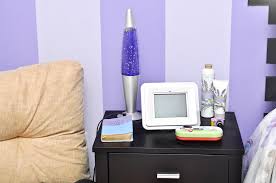
Watercolor Painting Ideas Painting Ideas for Kids For Livings Room Canvas for Bedrooms for Begginners art For Kids on Canvas for Home For Walls for Kitchen
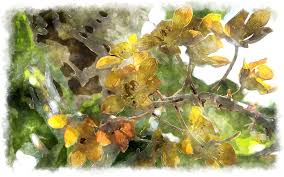
Watercolor Painting Ideas Painting Ideas for Kids For Livings Room Canvas for Bedrooms for Begginners art For Kids on Canvas for Home For Walls for Kitchen
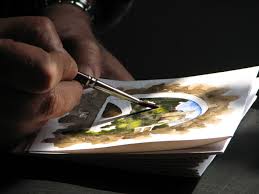
Watercolor Painting Ideas Painting Ideas for Kids For Livings Room Canvas for Bedrooms for Begginners art For Kids on Canvas for Home For Walls for Kitchen
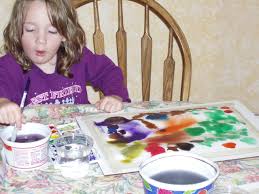
Watercolor Painting Ideas Painting Ideas for Kids For Livings Room Canvas for Bedrooms for Begginners art For Kids on Canvas for Home For Walls for Kitchen

Watercolor Painting Ideas Painting Ideas for Kids For Livings Room Canvas for Bedrooms for Begginners art For Kids on Canvas for Home For Walls for Kitchen
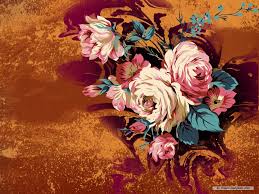
Watercolor Painting Ideas Painting Ideas for Kids For Livings Room Canvas for Bedrooms for Begginners art For Kids on Canvas for Home For Walls for Kitchen
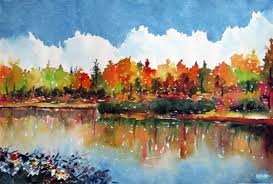
Watercolor Painting Ideas Painting Ideas for Kids For Livings Room Canvas for Bedrooms for Begginners art For Kids on Canvas for Home For Walls for Kitchen

Watercolor Painting Ideas Painting Ideas for Kids For Livings Room Canvas for Bedrooms for Begginners art For Kids on Canvas for Home For Walls for Kitchen
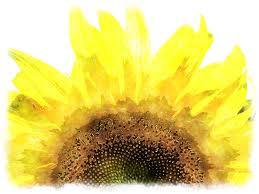
Watercolor Painting Ideas Painting Ideas for Kids For Livings Room Canvas for Bedrooms for Begginners art For Kids on Canvas for Home For Walls for Kitchen
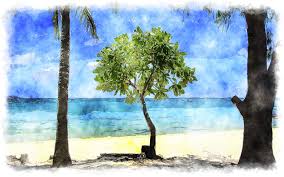
Watercolor Painting Ideas Painting Ideas for Kids For Livings Room Canvas for Bedrooms for Begginners art For Kids on Canvas for Home For Walls for Kitchen

Watercolor Painting Ideas Painting Ideas for Kids For Livings Room Canvas for Bedrooms for Begginners art For Kids on Canvas for Home For Walls for Kitchen
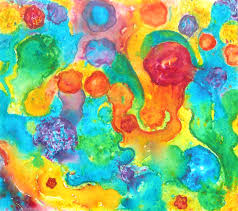
Watercolor Painting Ideas Painting Ideas for Kids For Livings Room Canvas for Bedrooms for Begginners art For Kids on Canvas for Home For Walls for Kitchen
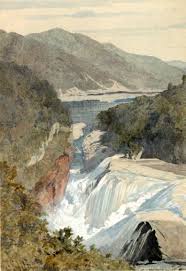
Watercolor Painting Ideas Painting Ideas for Kids For Livings Room Canvas for Bedrooms for Begginners art For Kids on Canvas for Home For Walls for Kitchen
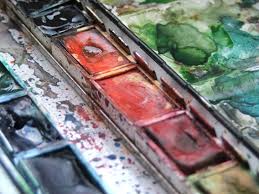
Watercolor Painting Ideas Painting Ideas for Kids For Livings Room Canvas for Bedrooms for Begginners art For Kids on Canvas for Home For Walls for Kitchen

Watercolor Painting Ideas Painting Ideas for Kids For Livings Room Canvas for Bedrooms for Begginners art For Kids on Canvas for Home For Walls for Kitchen
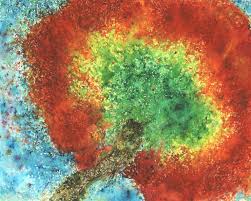
Watercolor Painting Ideas Painting Ideas for Kids For Livings Room Canvas for Bedrooms for Begginners art For Kids on Canvas for Home For Walls for Kitchen
No comments:
Post a Comment